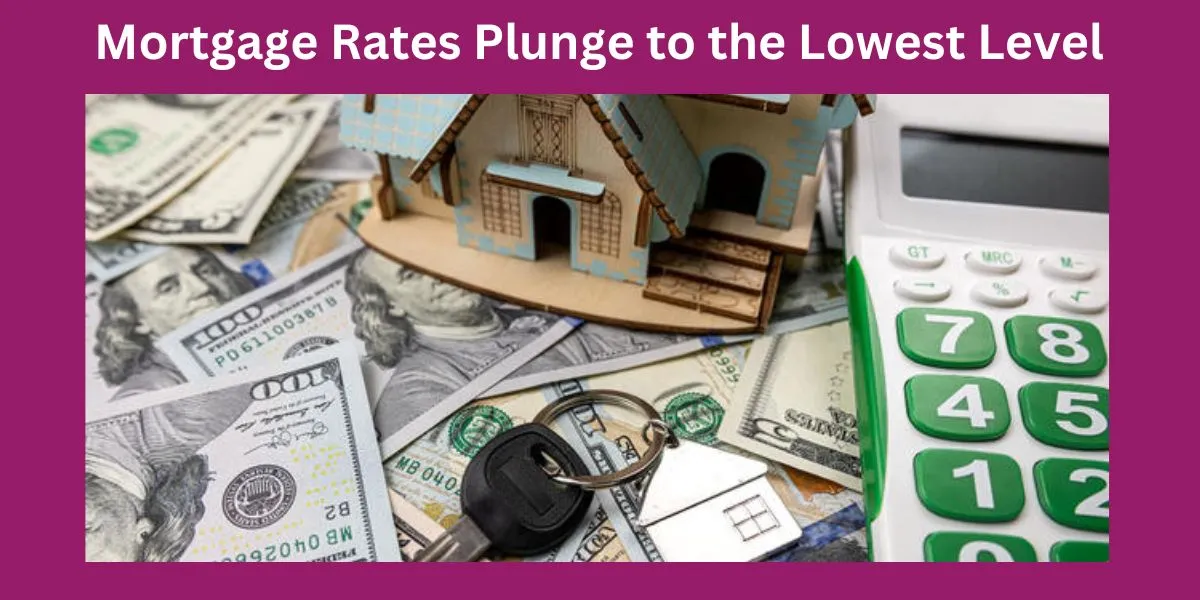The world of mortgages can often feel like a rollercoaster ride, especially when rates fluctuate. But recently, there’s some exciting news for homeowners and potential buyers. Mortgage rates have plunged to their lowest level in years, and it seems like there’s even more relief on the horizon. Let’s dive into what this means for you and how the Federal Reserve’s (Fed) actions play a key role in this financial shift.
What Exactly Are Mortgage Rates?
Before we get into the nitty-gritty of what’s happening, let’s quickly touch on what mortgage rates are. When you take out a loan to buy a home, the mortgage rate is the interest you’ll pay on that loan. It’s usually expressed as a percentage, and it can vary based on economic conditions, the lender, and your financial situation.
Why Should You Care About Mortgage Rates?
The interest rate on your mortgage directly affects how much you’ll end up paying over the life of the loan. A lower rate means lower monthly payments and less total interest paid. In other words, when rates drop, it’s easier (and cheaper) to own a home. Who wouldn’t want that?
The Big News: Mortgage Rates Have Dropped
Recently, mortgage rates have hit a low that we haven’t seen in years. For some, it almost feels too good to be true. If you’ve been considering buying a house or refinancing your current mortgage, now might be the perfect time to lock in a great deal.
How Low Are We Talking?
We’re not just talking about a small dip. Mortgage rates have dropped to levels not seen in nearly a decade. According to recent data, the average 30-year fixed mortgage rate has fallen below 3%, a significant drop compared to previous years when rates hovered around 4% or higher.
Why Are Mortgage Rates Dropping?
So, what’s behind this dramatic decrease? The primary reason is tied to the Federal Reserve’s policies. The Fed has been actively working to stimulate the economy by lowering interest rates and purchasing bonds. These actions help keep borrowing costs low, which in turn brings down mortgage rates.
The Fed’s Role in This
The Federal Reserve doesn’t directly set mortgage rates, but it influences them through its monetary policies. By cutting the federal funds rate and engaging in large-scale bond-buying programs, the Fed indirectly pushes down long-term interest rates, including mortgage rates.
Quantitative Easing Explained
You’ve probably heard the term “quantitative easing” (QE) thrown around, but what does it really mean? In simple terms, QE is when the Fed buys government securities and other assets to inject money into the economy. This action increases liquidity, encouraging lending and investment, which often leads to lower interest rates across the board.
What Does This Mean for Homebuyers?
If you’ve been waiting for the perfect moment to buy a home, this could be it. Lower mortgage rates mean lower monthly payments, making homeownership more affordable. Plus, with more people entering the market due to these favorable conditions, it could also be a great time to lock in a low rate before demand pushes prices up.
Affordability Is on Your Side
The current rate drop means you’ll be able to afford more house for your money. A slight difference in interest rates can make a huge impact on what you’ll pay over time. For example, a 1% reduction in mortgage rates could save you thousands of dollars over the life of your loan.
Time to Refinance?
Already a homeowner? Refinancing your mortgage might be a smart move right now. With rates at historic lows, you could potentially save a significant amount on your monthly payments. Many homeowners are taking advantage of these conditions to refinance and lower their interest rates, reducing their overall financial burden.
The Ripple Effect on the Housing Market
When mortgage rates drop, it doesn’t just benefit buyers and homeowners—it impacts the entire housing market. Lower rates tend to fuel demand for homes, as buyers rush to take advantage of favorable financing options. This can lead to an increase in home prices, as more people compete for the same properties.
Will Home Prices Rise?
While lower mortgage rates make homes more affordable on a monthly basis, increased demand can drive up home prices. However, with the Fed continuing to take measures to support the economy, it’s likely that affordability will remain high for the foreseeable future, even if home prices rise slightly.
The Fed’s Easing Portends More Relief
Here’s the exciting part—this might only be the beginning. The Federal Reserve has signaled that it’s willing to do whatever it takes to support the economy, including keeping interest rates low for an extended period. That means we could see mortgage rates stay low—or even go lower—in the coming months.
What Could Happen Next?
As the Fed continues its easing policies, we might witness even more relief in the mortgage market. Some experts predict that rates could dip even further if economic conditions require additional support from the central bank. This would be welcome news for anyone looking to buy or refinance in the near future.
Should You Wait for Lower Rates?
It’s tempting to hold off and see if rates drop even more, but waiting can be risky. While rates could go lower, they could also start to rise as the economy recovers. If you’re ready to buy or refinance, it might be better to act now rather than gamble on what could happen next.
Is There a Catch?
With rates this low, you might be wondering if there’s a downside. The truth is, these historically low mortgage rates are largely a result of the Fed’s response to economic uncertainty. While they’re great for borrowers, they’re also a sign that the economy still has a long road to recovery.
Uncertainty in the Economy
The Fed’s actions are aimed at supporting the economy, but they also reflect concerns about economic growth. Low rates are intended to spur borrowing and investment, but they also suggest that the economy is still struggling to gain momentum.
How to Take Advantage of Low Mortgage Rates
So, how can you make the most of this opportunity? Whether you’re a first-time buyer or looking to refinance, the key is to act quickly and make sure you’re in the best position to secure a low rate.
Steps to Lock in a Low Rate
- Check Your Credit Score – A higher credit score often means a better interest rate. If your score needs improvement, take steps to boost it before applying for a mortgage.
- Shop Around for Lenders – Don’t just settle for the first lender you find. Get quotes from multiple lenders to ensure you’re getting the best possible rate.
- Consider Refinancing – If you already own a home, check if refinancing at a lower rate would save you money.
- Get Pre-approved – If you’re in the market for a new home, get pre-approved for a mortgage. This will give you a better idea of what you can afford and help you act quickly when you find the right property.
- Act Quickly – With mortgage rates this low, demand is high. Don’t wait too long, or you might miss out on a great deal.
Conclusion: A Golden Opportunity for Homebuyers and Homeowners
Mortgage rates have plunged to levels we haven’t seen in years, and thanks to the Federal Reserve’s easing policies, there could be even more relief to come. Whether you’re buying a new home or refinancing your current one, now is an ideal time to take advantage of these historically low rates. With the right approach, you could save a significant amount of money and secure a more affordable future.
FAQs
1. How long will mortgage rates stay this low?
While no one can predict the future with certainty, the Federal Reserve has indicated that it plans to keep interest rates low for the foreseeable future. This could mean mortgage rates will remain favorable for some time.
2. Is it better to buy a home now or wait for even lower rates?
It’s hard to say if rates will drop further, but they’re already at historic lows. If you’re ready to buy, it might be wise to act now rather than wait and risk missing out.
3. Can refinancing save me money?
Yes! Refinancing at a lower rate can reduce your monthly payments and save you thousands of dollars over the life of your mortgage.
4. How do I get the best mortgage rate?
To secure the best rate, improve your credit score, shop around for lenders, and consider getting pre-approved before you start house hunting.
5. Will low mortgage rates affect home prices?
Low mortgage rates often increase demand, which can lead to rising home prices. However, the increased affordability can offset any price increases, keeping homes within reach for many buyers.










